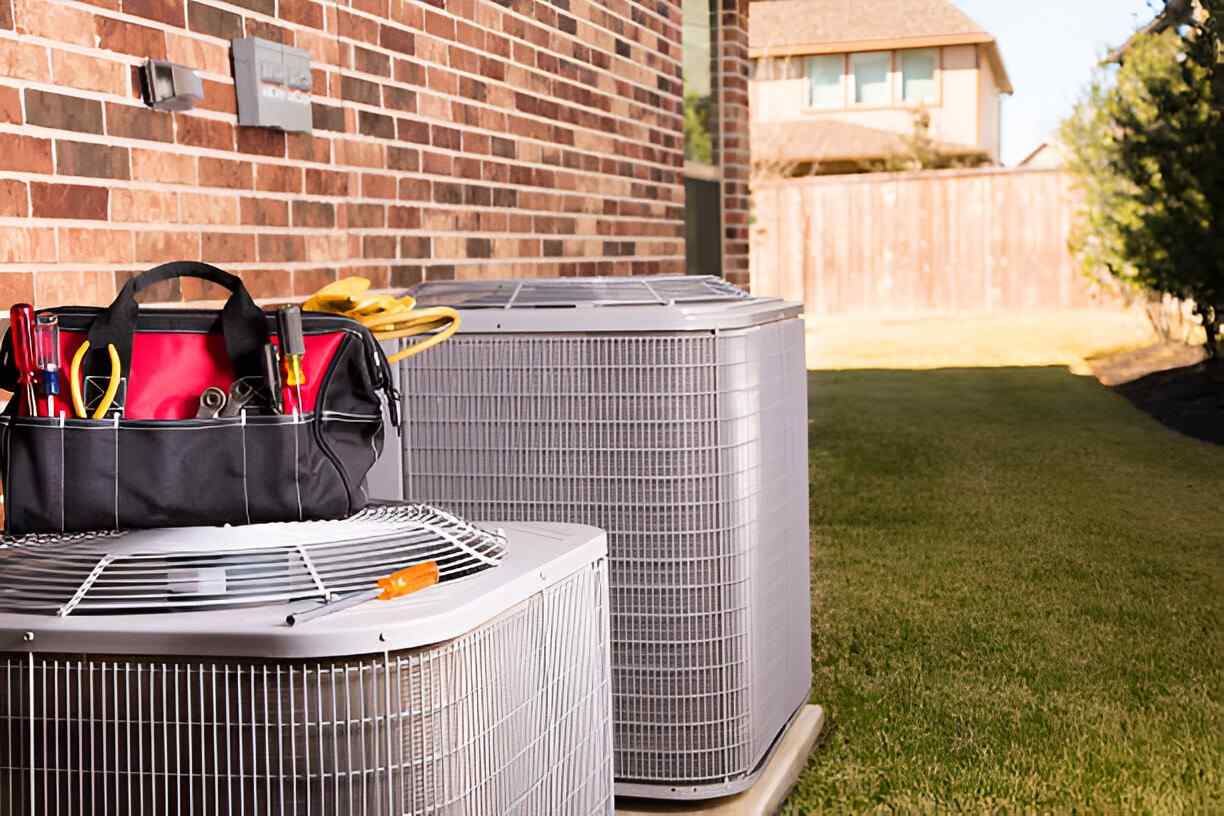AC Installation in Spring Hill, FL


Why a proper AC installation matters in Spring Hill, FL
Spring Hill’s climate creates unique demands:
- High humidity increases runtime and moisture load, so correct sizing and dehumidification strategy are essential.
- Coastal air can accelerate corrosion of outdoor components; materials and coatings matter.
- Frequent heavy use amplifies any inefficiency or airflow problems, driving up energy bills quickly.
- A correctly specified and installed system reduces repairs, maintains consistent comfort, and maximizes seasonal energy efficiency.
Common new AC installation types for Spring Hill homes
Most homeowners choose from these common options depending on home size, duct system and preferences:
- Central split systems with outdoor condenser and indoor air handler or furnace - standard for existing ducted homes.
- Heat pumps - provide efficient cooling and moderate heating, attractive for Florida climates.
- Ductless mini-split systems - ideal for additions, older homes without ducts, or zoned comfort.
- Package units - for homes built for a single-unit rooftop or slab-mounted system.
Each option has tradeoffs in efficiency, up-front cost, and integration with existing ductwork.
Site evaluation and pre-install diagnostic
A thorough site evaluation prevents costly surprises:
- Perform a detailed load calculation (Manual J) to size the system for Spring Hill’s heat and humidity conditions. Oversizing leads to short cycles and poor dehumidification; undersizing leads to constant operation and premature wear.
- Inspect existing ductwork for leaks, insulation gaps, restricted returns, or undersized runs.
- Verify outdoor unit placement for adequate airflow, clearance, and protection from salt spray or landscaping.
- Check electrical service capacity and panel space for disconnects and required breakers.
- This diagnostic phase sets specifications for equipment selection and any necessary pre-install repairs.
Equipment selection: what to prioritize
Choose equipment optimized for coastal, humid Florida conditions:
- Right capacity and SEER rating - higher SEER improves efficiency; select a capacity matched to your calculated load.
- Corrosion-resistant finishes and components for outdoor condensers.
- Variable-speed compressors and ECM blowers for improved humidity control and quieter operation.
- Appropriate refrigerant and correct charge procedures for peak efficiency.
- Consider integrated indoor air quality options like smart thermostats, upgraded filtration and dehumidification accessories to manage Spring Hill humidity and pollen.
Ductwork and thermostat integration
Ductwork and controls determine how well a new system performs:
- Repair and seal ducts to reduce leaks; add insulation for unconditioned spaces. Properly sized and balanced ducts ensure even cooling and efficiency.
- Replace or upgrade the air handler if airflow or coil compatibility is an issue.
- Install a modern thermostat with zoning or smart controls when appropriate to optimize runtime and comfort.
- Ensure condensate drainage is properly sloped and piped to prevent backups, especially during heavy Florida rainfall.
Permit and code compliance
Installations in Spring Hill must comply with Florida Building Code and local Hernando County requirements:
- Obtain building permits and mechanical permits before starting work. Permits ensure the installation meets wind-load, electrical, and safety standards.
- Equipment must meet Florida efficiency and refrigerant regulations; proper documentation is required for inspections.
- Inspections during and after installation verify compliance and protect homeowners from substandard work.
- Compliance reduces liability and ensures the system qualifies for manufacturer warranties.
Step-by-step installation process
A typical professional installation follows clear stages:
- Finalize equipment and materials after site evaluation and permit approval.
- Prepare the site: create a stable pad or platform for outdoor unit and clear refrigerant and electrical pathways.
- Remove old equipment safely and dispose of refrigerant per regulations.
- Install outdoor condenser and indoor air handler or evaporator coil; connect refrigerant lines and electrical.
- Modify and seal ductwork as needed; install or integrate controls and thermostat wiring.
- Evacuate lines and charge system with correct refrigerant amount; confirm electrical connections meet code.
- Commission system with performance testing and airflow balancing.
- Following these steps reduces rework and optimizes first-run performance.
Post-install testing and commissioning
Thorough testing verifies the system is operating correctly for Spring Hill conditions:
- Measure airflow, static pressures, and return temperatures to confirm proper distribution.
- Verify refrigerant charge, superheat and subcooling for peak efficiency.
- Test temperature differentials across the coil and confirm dehumidification performance.
- Confirm electrical load and breaker sizing under operating conditions.
- Run extended startup to ensure compressor reliability and absence of leaks or unusual noises.
Customer care follow-up and maintenance guidance
After installation, follow-up ensures long-term satisfaction:
- Provide documentation: equipment model, serial numbers, maintenance recommendations and permit/inspection records.
- Explain warranty terms and required routine maintenance to preserve coverage.
- Recommend seasonal maintenance: filter replacement, condenser coil cleaning, condensate line checks and annual tune-ups.
- Offer guidance on thermostat scheduling and humidity control strategies to reduce runtime and energy costs.
- Consistent maintenance extends equipment life and keeps your Spring Hill home comfortable year-round.
Benefits and practical tips for Spring Hill homeowners
A professionally installed AC system delivers:
- Improved comfort with better humidity control and even temperatures.
- Lower energy usage through correct sizing and efficient equipment.
- Fewer breakdowns and longer system life with proper duct sealing, commissioning and follow-up care.
Practical homeowner tips:
- Keep outdoor unit clear of vegetation and salt spray where possible.
- Change filters regularly and consider upgraded filtration if allergies are a concern.
- Use programmable or smart thermostats to reduce unnecessary runtime.
- Schedule annual maintenance ahead of the hot season to avoid peak-demand delays.
A well-planned AC installation in Spring Hill, FL accounts for climate, code and home-specific factors to deliver reliable, efficient cooling. Proper site evaluation, equipment selection, ductwork and thermostat integration, permit compliance, meticulous installation and comprehensive commissioning are the steps that ensure your new system meets expectations and performs efficiently for years.
Service Areas


